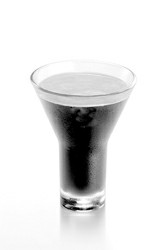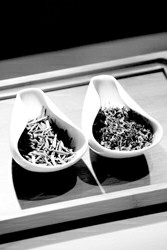Which do you prefer, coffee or tea? Do you prefer coffee or tea

Whether you prefer coffee or tea, you may have different answers. But if you think that coffee and tea are perceived only through taste, you are biased. Sometimes, the definition of culture goes far beyond taste. Let it integrate into life, become a way of life; let it stay in time, become a kind of history.
Coffee time-- walking into Italy
The origin of Italy and coffee can be traced back to the 16th and 17th centuries. Coffee was introduced into Italy with the booming trade between the port of Venice and North Africa and Egypt. In 1600, the Pope baptized coffee, so coffee began to be widely accepted and gradually became popular throughout Europe.
In Italy, those old cafes sometimes carry a weight of time. In Milan in 1817, next to the top theatre LaScala, a cafe called COVA was born. Because of its proximity to the theatre, the success attracted actors, musicians, playwrights and celebrities. As a gathering place for art pioneers and scholars, it has left an important brushstroke in Italian history. What is more worth mentioning is that it was in this cafe that patriots discussed brilliant ideas on the eve of Milan's "five-day uprising". During World War II in 1943, the COVA and LaScala theatres were severely damaged. In 1950, COVA moved to the fashion center ViaMonenapoleone, with the accumulation of time, a large number of fans, even star David Beckham is no exception.
The rich coffee culture in Italy is also reflected in the accumulation and retention of its culture. Unlike the simplified instant in North America, the Italians have always retained a wide variety of coffee and its making techniques. In the National Finance Center store in COVA, you can see a variety of coffee-making utensils, each for its own purpose. And the Italian feelings for coffee, is deeply integrated into the coffee production process.

Espresso (espresso) is the base of all fancy coffee. It is a pure classic coffee with concentrated, aromatic and strong flavor produced by water and coffee powder under pressure. According to a professional lecturer at Shanghai illy Coffee University, a cup of high-quality espresso needs to use 6-7 grams (about 50) of Arabica coffee beans, ground into a fine powder of about 1 micron in diameter, flow through water at a temperature of 90 degrees Celsius and about 30cc at 9 atmospheric pressure, and extract about 30cc coffee liquid in no more than 30 seconds. The dark liquid, covered with a layer of brown grease, contains 1500 chemicals, forming an extremely complex and subtle fragrance.
Drinking espresso is a complex sensory journey. Before the entrance, first observe the appearance and color of the coffee, then smell its aroma, and finally taste the consistency and throat rhyme of the coffee. People who really know how to taste coffee tell us that there are more than 1000 fragrances in espresso. Among them, the baking aroma produced by the conversion of sugar in coffee beans during baking, with a hint of vanilla cocoa, flower-like aroma and sweetness similar to fresh fruit, is the most easily identified.
Comment on tea-- a lot of knowledge
Like the Italian enthusiasm for coffee, the Chinese also have a deep affection for tea culture. Every May and June is the best time for the annual Tieguanyin spring tea to be put on the market. Tieguanyin tea is the best of oolong tea. Through the combination of Tieguanyin tea varieties and processing technology, it also forms a unique flavor-"Guanyin Rhyme". This generally refers to the evaluation of the quality of tea in the process of tasting tea, mainly refers to the good smell unique to Tieguanyin. Including: the smell of the lid, the smell of tea, tea dregs and the smell of the bottom of the cup. In addition, people also think that the "throat rhyme" after tasting tea is also a part of Guanyin rhyme. "throat rhyme" is the feeling that the teeth and cheeks stay fragrant and the mouthpiece is sweet.

Tieguanyin, made by traditional methods, has the characteristics of green stalks, green leaves and red edges. The red edge has gone through the process of shaking green, which reflects the degree of oxidation of tea polyphenols and is also the origin of the unique taste of Guanyin rhyme. In recent years, Tieguanyin, which is produced by air conditioning, has appeared according to the demand of the market. Over time, the traditional method of making fell into a lost situation. In order to preserve this traditional craft with a history of more than 300 years before it was lost, Fu Mingtang set up a traditional Tieguanyin production and research center in Anxi. Since the spring of 2006, the old tea master led by the chief tea master has made tea according to the old way of making tea. after years of efforts, although the finished product has not reached the top quality of that year, it has the characteristics of traditional Tieguanyin: orchid fragrance, Guanyin rhyme, green leaf red edge.
As a tea drinker, how can you taste "Guanyin rhyme and orchid fragrance"? Tea tasting pays attention to the three procedures of judging tea, watching tea and tasting tea. To judge tea means to look at the tea before making tea and see the color of dry tea. Some experts can see what kind of tea it is, even before and after Ming Dynasty, and you can smell the fragrance of dry tea. After brewing, the tea will almost return to its natural state, with high tenderness, buds and leaves into flowers, graceful and graceful in the tea, while some are fat and strong, and the buds rise and fall up and down in the tea, like a forest of flag guns. At this time, the tea will slowly develop with the movement of tea, gradually from shallow to deep. At the moment, it is very pleasing to the eye to watch the shape of tea and enjoy the color of brown. The third step is to taste the tea, taste the soup and smell the tea. After the tea is brewed, the fragrance will spread out in the water and the fragrance can be smelled at this time.
In fact, the taste of Tieguanyin is to taste its charm, not only limited to the tea itself, but also the elegance, so the atmosphere and sentiment are very important, the same cup of tea, the surrounding environment is quiet and simple or modern gorgeous, the feeling to the tea tasters is completely different.
Find a suitable time, have a leisurely feeling, taste a pot of tea, feel the delicate and gentle details of Tieguanyin and even Chinese traditional tea culture, and appreciate the double enjoyment brought by that aesthetic feeling and culture.
Source: Xinmin Evening News, author: Wu Ming
Important Notice :
前街咖啡 FrontStreet Coffee has moved to new addredd:
FrontStreet Coffee Address: 315,Donghua East Road,GuangZhou
Tel:020 38364473
- Prev

Italian coffee espresso tasting skills look at the appearance of Crema
Look: the standard amount of a cup of perfect Single Espresso is to extract an ounce of coffee essence in 25 seconds. Look at the appearance of Crema: a perfect Italian coffee espresso, the surface is always thick, brown red Krima crema, Krima crema is the protein, oil and other aromatic components extracted from the coffee under high pressure, is the essence of coffee concentrate. Finish
- Next

Coffee common sense savors the strong flavor of coffee in the afternoon
Coffee, only need such a small cup, in the lonely time, a person quietly taste, it belongs to loneliness and the hope after loneliness. Coffee doesn't make me passionate, but it makes me know the fun of contemplation. A good cup of coffee, half is taste, the other half is feeling. This taste and feeling can only be cooked by hand, and then made according to one's own mood.
Related
- Beginners will see the "Coffee pull flower" guide!
- What is the difference between ice blog purified milk and ordinary milk coffee?
- Why is the Philippines the largest producer of crops in Liberia?
- For coffee extraction, should the fine powder be retained?
- How does extracted espresso fill pressed powder? How much strength does it take to press the powder?
- How to make jasmine cold extract coffee? Is the jasmine + latte good?
- Will this little toy really make the coffee taste better? How does Lily Drip affect coffee extraction?
- Will the action of slapping the filter cup also affect coffee extraction?
- What's the difference between powder-to-water ratio and powder-to-liquid ratio?
- What is the Ethiopian local species? What does it have to do with Heirloom native species?

